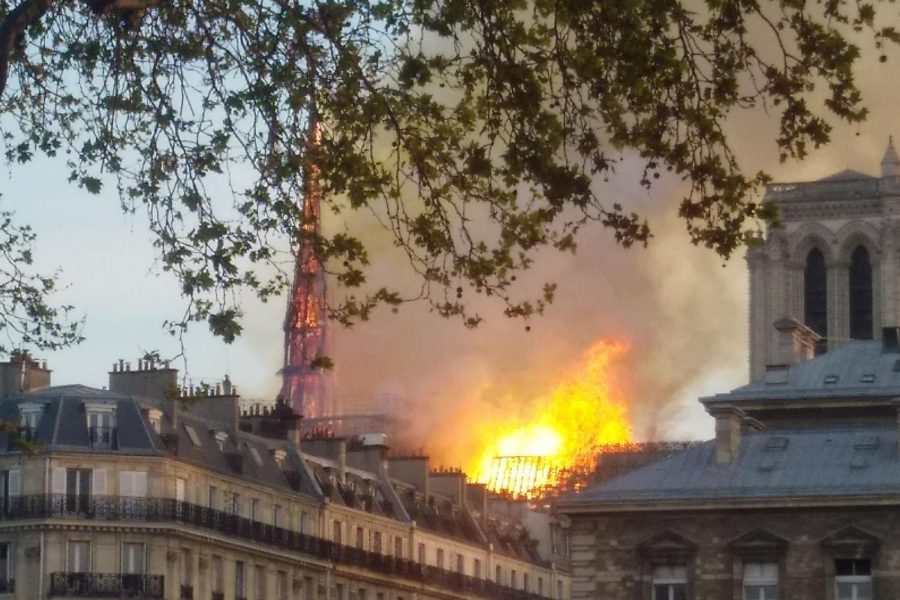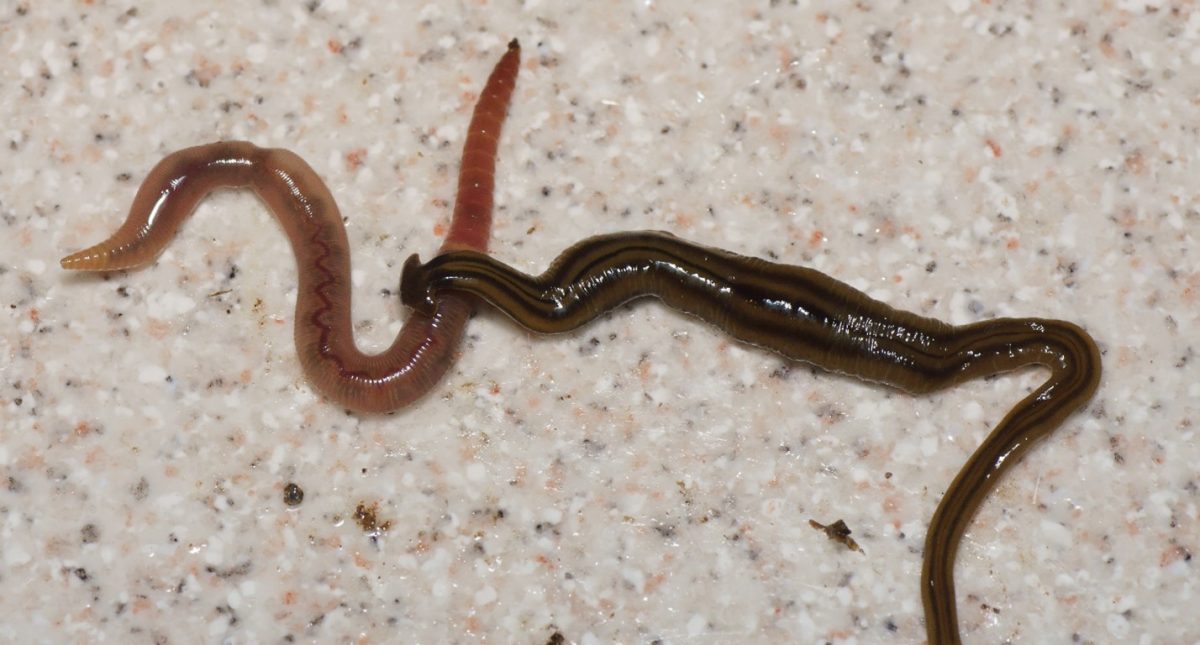Cathedral at Notre Dame Burns
Officials suspect renovations started fire
April 17, 2019
For 850 years, the cathedral at Notre Dame in Paris, France has stood tall and everlasting. Drawing in approximately 13 million tourists a year, it is one of Paris’ staple attractions. The rich history of the cathedral dates back to its construction in 1163. Henry VI, Napoleon Bonaparte and Joan of Arc have all stepped inside.
The book “Hunchback of Notre Dame” by Victor Hugo stemmed from the vast neglect the cathedral took on in the 1790s. The book’s popularity helped inform the readers of Hugo’s love for the building and its need for renovation. After the publication of Hugo’s book, architects Jean-Baptiste-Antoine Lassus and Eugène-Emmanuel Viollet-le-Duc redid the famous spire and flying buttresses.
On April 15, the cathedral caught on fire. Because of Holy Week, the Catholic cathedral had special masses planned for the entirety of the week. When the smoke alarm went off at 6:30 p.m., those inside were ushered out. The cause of the fire is still under investigation, but officials speculate that is has to do with ongoing renovations.
For some students, especially those who are devout Catholics, the news is heartbreaking. Sophomore Mackenzie Moore learned the news from her mother, who works for St. Theresa’s Catholic church in Little Rock.
“My mom texted me a news report showing the fire a little before one [o’clock],” Moore said. “My initial reaction was heartbreak over the many priceless artifacts that were sure to be lost, and prayers for citizens and the brave firemen.”
Along with many news stories circulating, there were also various livestreams where people around the world watched the building burn.
“I couldn’t stop thinking about it,” Moore said. “When I got home, I turned on the news and there was a live broadcast. It was such a tragedy, and I didn’t want to keep watching, but I couldn’t look away.”
In a matter of hours, the roof had caved in and the main spire had fallen.
“It’s been there for centuries,” Moore said. “It’s so sad to see so much history lost in a matter of hours.”
Senior Madison Betz, a member of Our Lady of Fatima church in Benton, spent some time in mourning with band director Josh Gardner.
“[We were] watching a video that showed the spire collapsing,” Betz said. “As we were watching it, my heart sunk.”
For Betz, Notre Dame holds more than just religious significance.
“The building signifies not only amazing gothic architecture from years ago, but artwork and music that originated not just in that town, but in that building,” Betz said. “Thinking of how that part of history could be visible to the human eye just yesterday burning down before people’s eyes is just horrific and unimaginable.”
English teacher Megan Calvillo was able to visit the cathedral in 2004 as a part of a study abroad program at Harding University.
“I was traveling with a group of four girls, and we had the hardest time finding it,” Calvillo said. “It was nestled in a neighborhood, and the streets of Paris are somewhat winding. We didn’t speak French, so we wandered around in circles for hours squabbling about map reading and listening to my friend Maggie tell us about how amazing the rose windows and flying buttresses were supposed to be.”
Calvillo learned of the news in her fifth period pre-AP English class.
“[I was] deeply sad,” Calvillo said. “Surprised, in fact, that I could be that sad over a building.”
As an English teacher, Calvillo’s mind is always reeling with themes, and this event is no exception.
“One of my students in sixth period asked, ‘Why don’t they just put out the fire?’” Calvillo said. “It’s the hubris of mankind: we have this delusion that we have mastered nature, but we have not.”
Another thing Calvillo says one can learn from the fire at Notre Dame is that not everything will last forever.
“I just always assumed Notre Dame would be there; I assumed I could go back or take my children any time I wanted,” Calvillo said. “That was foolishness. Just because it stood for 800 years doesn’t mean it’s destined to stand for all of time.”
For those who are a part of the Catholic Diocese of Little Rock, the news was discovered during an annual meeting during Holy Week. Father Erik Pohlmeier’s first reaction was disbelief.
“Every year on Monday of Holy Week, all the priests in Arkansas gather for the day in Little Rock,” Pohlmeier said. “ My first reaction was disbelief, thinking ‘This can’t be real.’ I just presume something so iconic will always be there.”
Pohlmeier has been to the cathedral on multiple occasions.
“I have been there three times and was very moved to be in a place so famous with so much history and yet feel at home,” Pohlmeier said. “It is just a more famous and more ornate version of the same global Church we are part of here.”
While this tragedy happened during Holy Week, the symbolism is uncanny.
“Holy Week is all about dying and rising,” Pohlmeier said. “The burning is a definite dying, but there are immediate promises from many people to help pay for rebuilding. There is clear hope the building will rise again.”
Pohlmeier hopes that the destruction may spark a revival for the people of France.
“My overall thought is hope that the symbolism of dying and rising will play out with the faith of people in France,” Pohlmeier said. “There are many reports of people quitting their faith in France, and I pray this loss will touch something deep in the soul of many people so that when the building comes back, so will the faith of their hearts.”
Firefighters were able to save much of the structure, and in less than 24 hours, hundreds of millions of dollars have been donated towards the reconstruction of Notre Dame. French president Emmanuel Macron has vowed to have the cathedral rebuilt within five years, claiming to make the monument “even more beautiful.”







